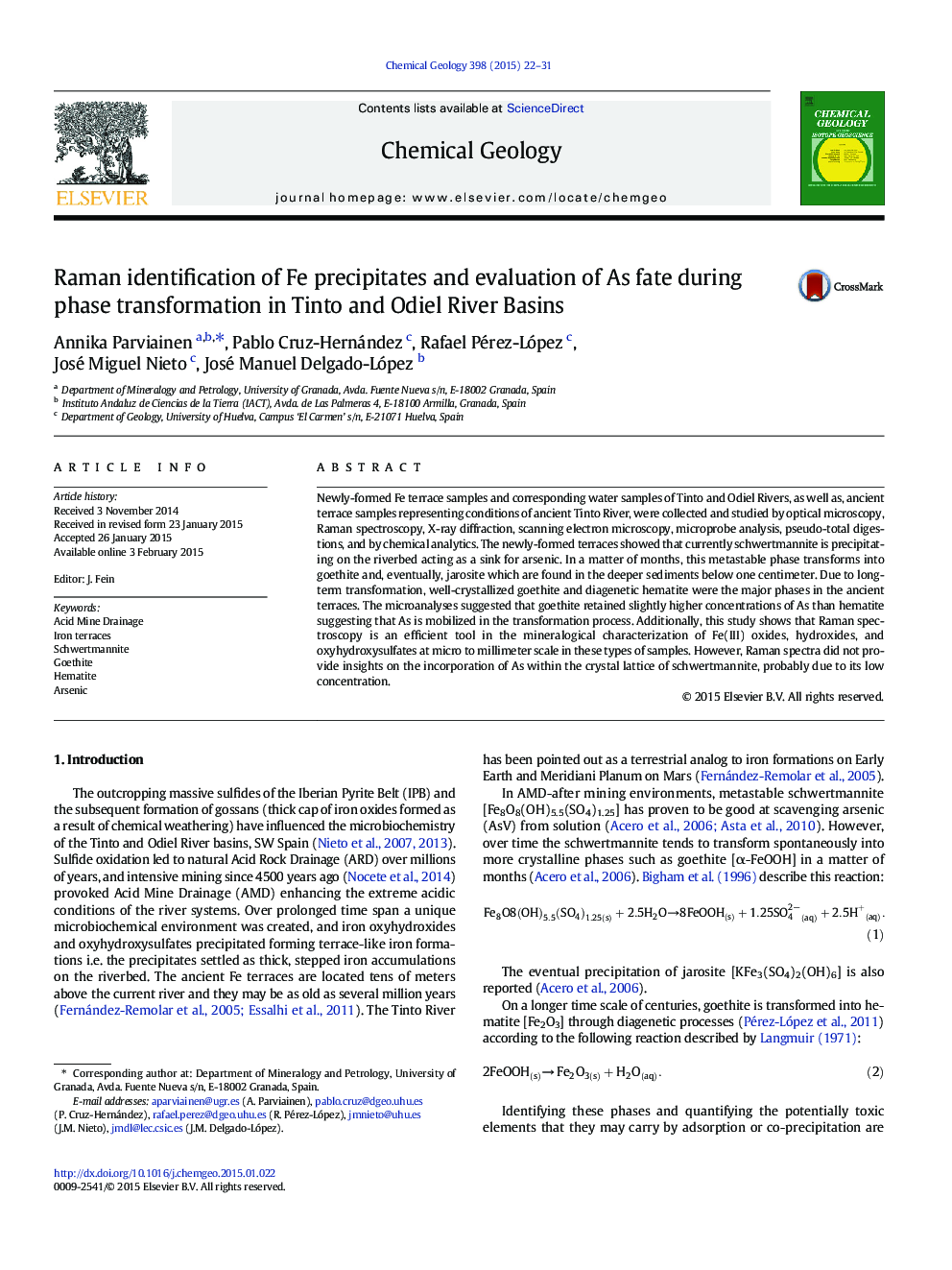| Article ID | Journal | Published Year | Pages | File Type |
|---|---|---|---|---|
| 4698607 | Chemical Geology | 2015 | 10 Pages |
•Mineralogy and geochemistry of newly-formed and ancient Fe terraces were studied.•Schwertmannite scavenges As from solution.•As mobility is affected by short-term and long-term phase transformations.•However, ancient terraces still contain relatively elevated As concentrations.
Newly-formed Fe terrace samples and corresponding water samples of Tinto and Odiel Rivers, as well as, ancient terrace samples representing conditions of ancient Tinto River, were collected and studied by optical microscopy, Raman spectroscopy, X-ray diffraction, scanning electron microscopy, microprobe analysis, pseudo-total digestions, and by chemical analytics. The newly-formed terraces showed that currently schwertmannite is precipitating on the riverbed acting as a sink for arsenic. In a matter of months, this metastable phase transforms into goethite and, eventually, jarosite which are found in the deeper sediments below one centimeter. Due to long-term transformation, well-crystallized goethite and diagenetic hematite were the major phases in the ancient terraces. The microanalyses suggested that goethite retained slightly higher concentrations of As than hematite suggesting that As is mobilized in the transformation process. Additionally, this study shows that Raman spectroscopy is an efficient tool in the mineralogical characterization of Fe(III) oxides, hydroxides, and oxyhydroxysulfates at micro to millimeter scale in these types of samples. However, Raman spectra did not provide insights on the incorporation of As within the crystal lattice of schwertmannite, probably due to its low concentration.
